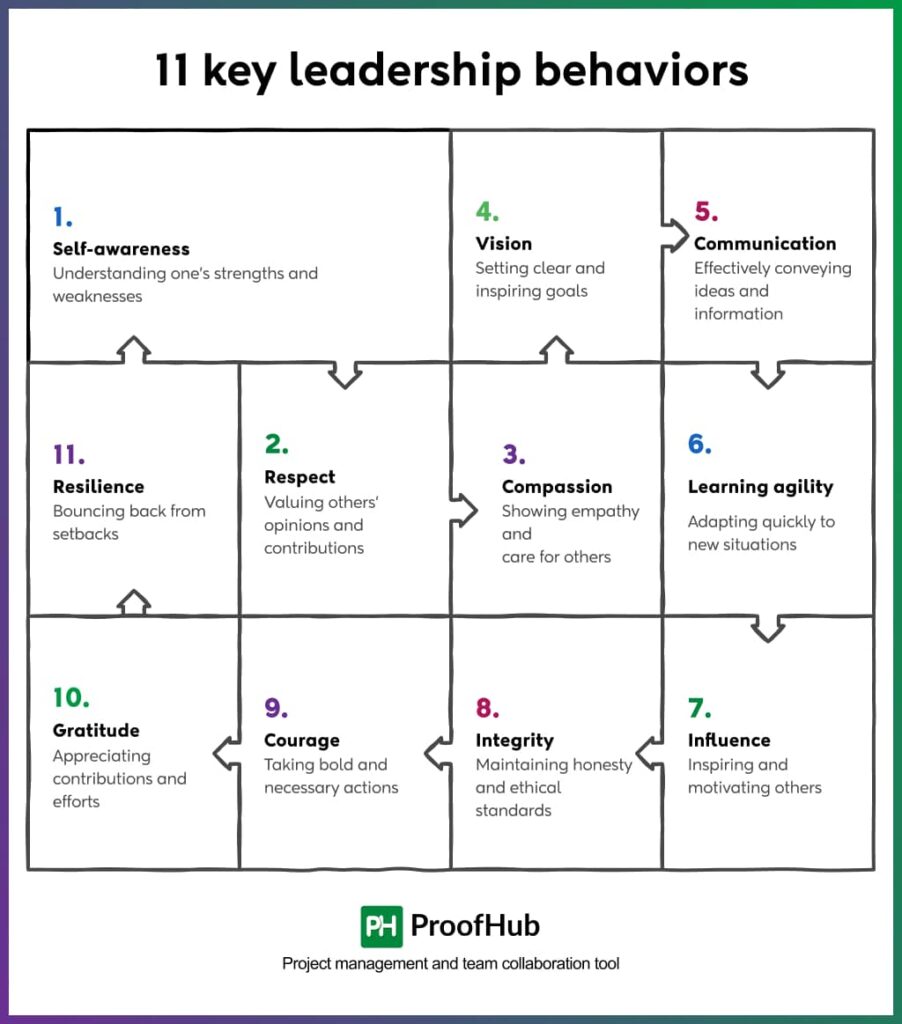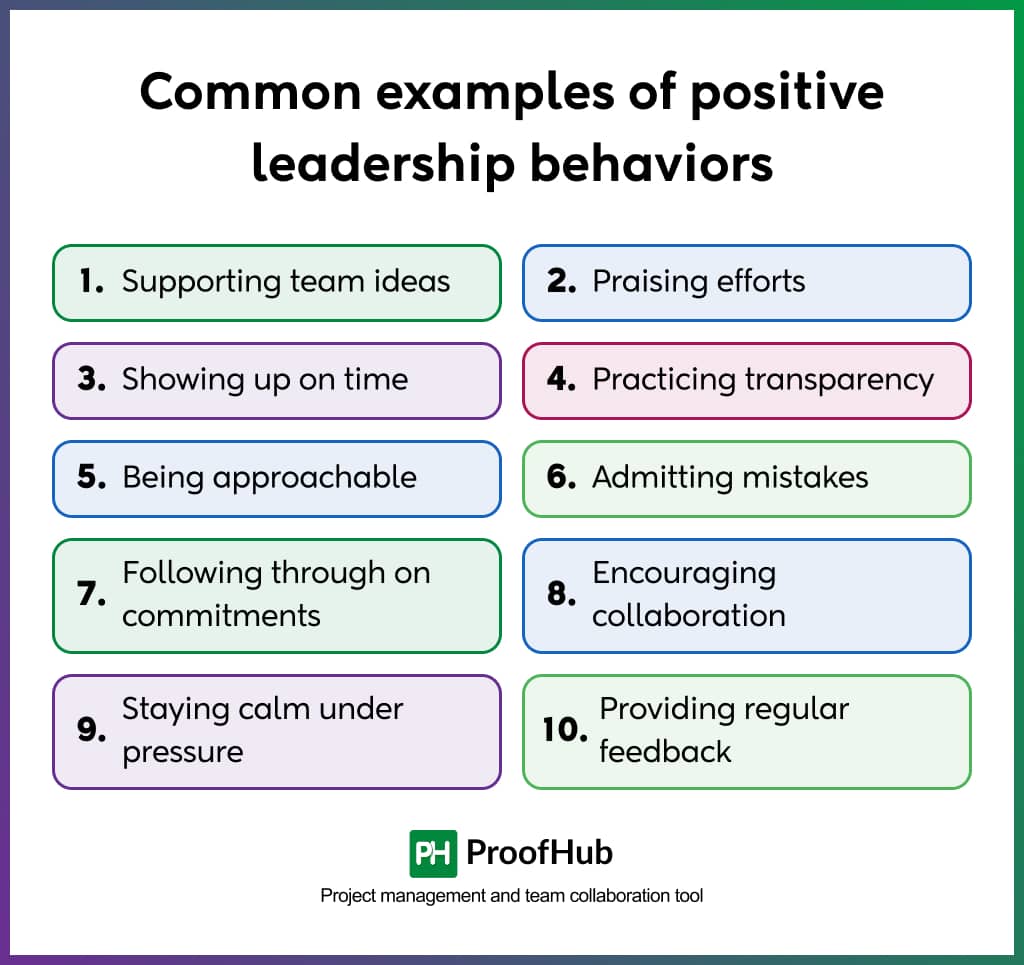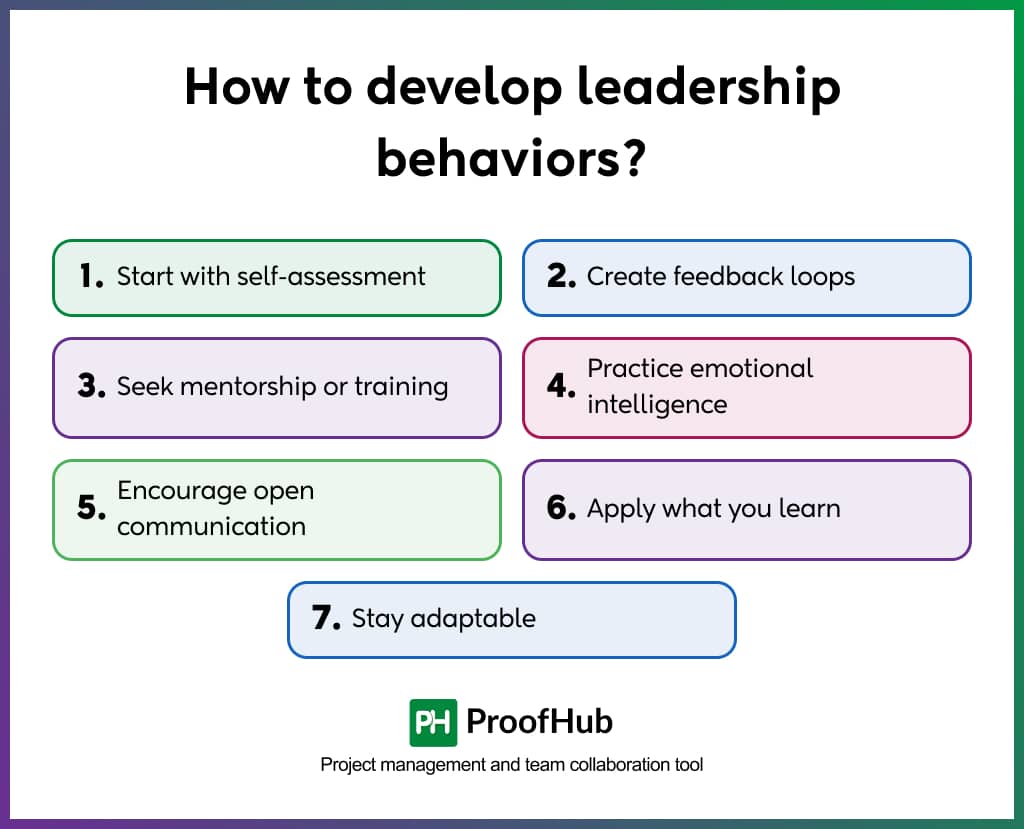People don’t quit jobs, they quit bad leaders.
It’s something we have all heard, but it’s rooted in truth. A bad leader can drain the life out of even the most talented teams. Whereas a strong leader can turn an average group into the next level of creativity, productivity, and resilience.
Why? Because leadership is not about a job title or a corner cabin – it’s about presence, behavior, and consistency.
It’s about how you treat people when things go wrong, how you show up when no one’s watching. How do you listen when someone disagrees with you?
It’s in the little things, a well-timed word of encouragement, a thoughtful pause before reacting, and a willingness to own up to mistakes.
Remember, great teams are never built overnight. They are shaped by the behaviors of the people leading them – leaders who build trust, accountability, and a shared sense of purpose through everyday actions.
Whether you are leading a team of five people in a startup team or managing a division in a large organization, the way you lead determines whether your team simply functions or truly thrives.
In this article, we’ll explore 11 core leadership behaviors that set great leaders apart from others. These are not abstract qualities; they are practical, learnable habits that anyone in a leadership role can develop.
If your goal is to lead with impact and build a team that succeeds, these behaviors will help you get there.
Before moving forward, let’s learn what leadership behaviors are.
What is leadership behavior?
Leadership behavior refers to the observable actions and decisions a leader makes in day-to-day interactions with their team. Think of behaviors like self-awareness (understanding your impact on others), compassion (genuinely caring about your team’s well-being), integrity (doing what’s right, even when it’s hard), and courage (making tough calls or standing up for your values) are some leadership behaviors that shape how leaders influence, inspire and guide others.
Unlike personality traits (like being introverted or outgoing) or leadership skills (like public speaking or strategic planning), behaviors are visible and learnable. Traits are what you’re born with, skills are what you develop, and behaviors are how you show up.
Also read – What is team leadership? A comprehensive guide
11 Key leadership behaviors that effective leaders demonstrate
Great leaders create high-performing teams not by chance, but by practicing specific actions that build trust, clarity, and motivation.
Here are 11 key leadership behaviors that influence how a team thinks, feels, and performs.

1. Self-awareness
Great leaders don’t just lead others – they first lead themselves.
Self-awareness is the ability to recognize your emotions, behaviors, and their impact on others around you. It’s about understanding your strengths, blind spots, values, and emotional triggers and using that awareness to lead with intention, not impulse.
When leaders are self-aware, they make better decisions, handle stress more effectively, and respond thoughtfully rather than react impulsively. This results in more stable leadership and creates psychological safety within the team.
If you dominate conversations during team meetings or brainstorming sessions, try pausing and listening more. Let others finish. Invite quieter voices in. You’ll be surprised how inclusion can fuel innovation.
How to demonstrate self-awareness?
- Reflect on both praise and criticism – what’s the pattern
- Keep a leadership journal to review your actions and mindset
- Regularly ask yourself, “How did my actions affect my team today?”
- Participate in 360-degree feedback and act on the input.
- Observe your emotional triggers and learn how to manage them in the moment
Self-awareness is a lifelong leadership habit when practiced consistently, it becomes the lens through which every other leadership behavior improves.
2. Vision
Vision isn’t just about setting goals – it’s about painting a picture of a better future and inspiring people to move toward it together.
Great leaders can see beyond the present. They imagine what is possible and then connect each team member’s efforts to that bigger picture. A strong and clear vision gives people purpose, not just tasks. It answers the most important question in every workplace: “Why does this work matter?”.
When a leader’s vision is clear, the team is aligned, motivated, and resilient even during uncertainty or setbacks. They are not just checking off to-dos; they are building something meaningful. And while vision is powerful, it only becomes reality when it becomes an actionable plan.
Think of vision as the North Star. Your job as a leader is to make sure your team not only sees it but also believes they can reach it.
How to demonstrate vision?
- Communicate the “why” behind every initiative.
- Revisit and reinforce long-term objectives regularly.
- Involve the team in building the vision.
- Use storytelling to connect daily work to the overall goal.
3. Respect
Respect isn’t earned through authority – it’s earned through behavior.
Respect in leadership means treating every team member with dignity, fairness, and professionalism, regardless of their role, background, or opinion.
Respect builds trust and cooperation. It creates an environment where everyone feels safe contributing ideas, giving feedback, and working together toward goals.
It’s easy to respect those we agree with. The real test is how we treat those who challenge us.
Respect doesn’t mean avoiding hard conversations or compromising standards – it means engaging with honesty and empathy, even when it’s tough.
How to demonstrate respect?
- Listen without interrupting.
- Value differences in opinion and experience.
- Give credit where it’s due.
- Follow through on promises and show up prepared.
When respect becomes a daily habit, trust follows, and with trust, teams unlock their true potential.
4. Compassion
Compassion is empathy in action.
Compassion is the ability to empathize with others’ experiences and take action to support them. It is not only about understanding, it’s about caring and helping.
Compassionate leaders build deeper relationships, resulting in stronger team bonds, higher morale, and lower turnover, especially during periods of stress or change.
Imagine a team member going through a family crisis. A compassionate leader doesn’t just say “Take care,” they offer flexible deadlines, shift workloads, or simply ask, “How can I support you?” That gesture can leave a lasting impact.
How to demonstrate compassion?
- Check-in on your team’s well-being regularly.
- Offer help without being asked.
- Encourage mental health days when needed.
- Lead with empathy during difficult conversations.
Compassion doesn’t make you soft, it makes you strong where it matters most: in the hearts and minds of your team.
5. Communication
Great leaders don’t just talk, they create understanding.
Effective communication means sharing information clearly, listening actively, and ensuring mutual understanding across all directions.
Good communication prevents confusion, reduces errors, and improves collaboration. It makes sure that expectations are clear and everyone is aligned.
Think of a team without clear roles, missing updates, or overlapping efforts. Now imagine one where tasks, goals, and deadlines are clearly laid out, feedback is welcomed, and progress is transparent. That’s the power of intentional communication.
Consistent communication rituals like weekly check-ins, defined roles, and open feedback loops can drastically reduce misunderstandings and missed deadlines.
And using a collaboration tool like ProofHub makes this even easier by aligning conversations, tasks, files, and responsibilities all in one place, keeping everyone focused and informed.
How to demonstrate it?
- Use simple, direct language.
- Encourage two-way communication.
- Clarify goals, deadlines, and responsibilities.
- Actively listen before responding.
Clear communication isn’t just a leadership skill, it’s a leadership responsibility. When you communicate with clarity and intent, your team moves with confidence and cohesion.
6. Learning agility
The best leaders aren’t the ones who know it all – they’re the ones who learn the fastest.
Learning agility is the ability to quickly adapt and apply lessons from new experiences. It reflects curiosity, open-mindedness, and a growth mindset.
When leaders are agile learners, they model adaptability for the team. This helps the entire team stay innovative, flexible, and ready to handle uncertainty or change.
Picture this: A major campaign falls short of expectations. Instead of pointing fingers, the leader calls a “lessons learned” session. The team reflects honestly, extracts key insights, and applies them to design a stronger follow-up strategy. That’s learning agility in action, and it builds trust, creativity, and continuous growth.
When leaders model learning agility, they give the team permission to experiment, evolve, and get better, not just busier.
How to demonstrate learning agility?
- Embrace experimentation, even if it means failing.
- Reflect on mistakes and share learnings openly.
- Stay current with industry trends and tools.
- Ask your team for ideas on how to improve.
Learning agility isn’t just about adapting, it’s about thriving through change. And in today’s world, that’s what sets exceptional leaders apart.
7. Influence
True leadership isn’t about power – it’s about influence.
Influence is the ability to inspire, persuade, and motivate others without relying on authority alone. It comes from credibility, trust, and communication.
You don’t need a title to be influential. Influential leaders rally people around goals, encourage collaboration across departments, and motivate teams to take ownership of their work. They earn support based on value, not position.
How to demonstrate influence?
- Build strong relationships across the organization.
- Share a clear, compelling rationale for your ideas.
- Lead by example to earn trust.
- Recognize and appreciate others’ contributions to gain cooperation.
8. Integrity
Integrity is doing the right thing – even when no one’s watching.
Integrity means acting in alignment with your values, being honest, and doing the right thing, even when it’s complicated or inconvenient.
Integrity builds trust. Teams that trust their leader are more cohesive, loyal, and willing to speak up because they know their leader is fair and ethical.
Imagine a leader who’s praised by a client for a project they didn’t directly work on, and they turn the spotlight to their team instead. That small act of honesty sends a powerful message: “I see you, and your work matters.”
How to demonstrate integrity?
- Be honest and transparent in all communication.
- Admit mistakes and take responsibility.
- Set clear ethical standards and follow them consistently.
- Make decisions that align with values, not only outcomes.
9. Courage
Courage in leadership isn’t loud. It’s intentional.
It is the willingness to take risks, speak up, or make tough decisions, especially in the face of uncertainty or pushback.
Courageous leaders create an environment where innovation and honesty are welcome. They inspire others to take initiative and speak their truth without fear.
Think of a time when a leader challenged a long-standing process that no longer worked, even when others resisted. That choice didn’t just improve efficiency; it signaled to the team, “We don’t do things just because we always have. We do what’s right.”
How to demonstrate courage?
- Make decisions based on values, not popularity.
- Be willing to challenge outdated norms.
- Stand up for your team when needed.
- Encourage open debate without fear of judgment.
Courage isn’t just about bold moves it’s about consistent integrity in difficult moments. And when leaders lead with courage, teams follow with confidence.
10. Gratitude
Gratitude isn’t just polite – it’s powerful.
Gratitude is the act of recognizing and appreciating the efforts, achievements, and presence of others in meaningful ways.
Teams that feel appreciated are more engaged, committed, and motivated. Gratitude strengthens team bonds and boosts morale.
A team pushes through a tough deadline. Instead of quickly moving to the next task, the leader pauses, names each person’s unique contribution, and sends a handwritten note to say “Thank you.” That moment doesn’t just mark the end of a project, it becomes a lasting source of pride.
How to demonstrate gratitude?
- Say “thank you” often and sincerely.
- Celebrate small wins as well as big ones.
- Personalize recognition so it feels genuine.
- Build appreciation into team rituals or meetings.
Gratitude turns leadership into relationship-building. And when people feel appreciated, they don’t just work hard, they work with heart.
11. Resilience
Leadership isn’t about avoiding adversity – it’s about rising through it.
Resilience is the ability to recover from setbacks, stay focused during stress, and keep moving forward with determination.
Resilient leaders help teams weather tough times without falling apart. They model persistence and optimism, keeping momentum strong during challenges.
A project fails unexpectedly. Instead of blame or frustration, the leader acknowledges the setback, rallies the team, and lays out a plan to move forward with optimism intact. That kind of leadership doesn’t just solve problems, it builds unshakable trust.
How to demonstrate resilience?
- Stay calm under pressure and avoid emotional overreactions.
- Focus on solutions, not just problems.
- Reframe challenges as opportunities to grow.
- Support your team through setbacks with encouragement and practical help.
In the face of challenges, your team will look to you. If they see resilience, they’ll find their own. And together, you’ll come out stronger on the other side.
Why are effective leadership behaviors important?
Effective leadership behaviors are essential for building and sustaining high-performing teams. The way leaders conduct themselves impacts the team’s mindset, performance, and long-term success. Their actions influence not only outcomes but also how people feel about their work and each other.
Here’s why these behaviors are important for leaders:

- They strengthen team morale: When leaders show consistency and integrity in their actions, it creates stability and builds trust within the team. This uplifts the team spirit and keeps them motivated, even during tough phases.
- They increase productivity and help achieve goals: Teams perform better when leadership provides direction and maintains focus. Effective leadership behaviors guide team efforts, reduce confusion, and make sure that everyone works toward shared objectives with clarity.
- They improve employee retention and well-being: Teams prefer to stay in an environment where leaders support them, value their contributions, and create a positive day-to-day experience. These leadership behaviors reduce burnout, increase job satisfaction, and lower turnover.
- They impact organizational culture: Leadership behaviors define “how things are done” across the team and often the entire organization. A strong leadership example builds a culture of accountability, openness, and collaboration.
- They help resolve conflicts and maintain team harmony: In moments of tension, leadership behavior sets the tone. How leaders respond can either escalate the issue or lead to a resolution. Consistent and fair behavior encourages healthy dialogue and problem-solving.
What are some common examples of positive leadership behaviors?
Here are some common examples of positive leadership behaviors:

- Supporting team ideas: Leaders who listen to suggestions and give credit to team members create an environment where teams feel heard and valued.
- Praising efforts: Recognizing hard work, either big or small, boosts morale and encourages consistent performance.
- Showing up on time: Being punctual shows reliability and sets a professional example for the rest of the team.
- Practicing transparency: Sharing information openly helps build trust and keeps everyone aligned on goals and expectations.
- Being approachable: When leaders remain open and easy to talk to, team members are more likely to speak up and collaborate freely.
- Admitting mistakes: Owning up to your own errors shows humility and encourages a culture of accountability and learning.
- Following through on commitments: When leaders do what they say, it reinforces credibility and strengthens team trust.
- Encouraging collaboration: Promoting teamwork and cross-functional cooperation leads to better results and stronger relationships.
- Staying calm under pressure: Maintaining composure during challenges reassures the team and helps everyone stay focused.
- Providing regular feedback: Offering clear and constructive input helps team members grow and stay on track.
What are some challenges in demonstrating good leadership behaviors?
Even the best leaders face challenges when it comes to consistently showing positive behaviors. Leadership is a daily practice that requires effort and growth.
Here are some everyday struggles you may encounter:
- Emotional fatigue: Constantly managing team needs, making decisions, and staying positive can be mentally and emotionally draining. Without proper support or rest, leaders may find it hard to show up with the patience and energy their role demands.
Also read – Leadership vs management: What is the difference?
- Lack of feedback: Leaders often receive little input on how they’re doing. Without honest feedback from peers or the team, they may continue harmful behaviors without realizing it.
- Ego-driven or fear-based leadership: Sometimes, personal insecurities or the need to stay in control can cause leaders to act out of ego or fear, blocking collaboration, openness, and trust.
- Balancing empathy with accountability: Leaders may struggle to be both understanding and firm. Being too lenient or too strict can throw off team dynamics and performance.
- Adapting to different personalities: Every team member is different. Adjusting communication styles and approaches for each person can be challenging, especially in diverse or fast-paced teams.
- Pressure to deliver results: The constant demand to meet deadlines can cause leaders to overlook the people’s side of leadership, prioritizing outcomes over relationships.
How to develop leadership behaviors?
Leadership behaviors can be developed with intention and practice. Great leaders grow over time by reflecting, learning, and staying open to feedback.
Here are some tips to build and strengthen your leadership behaviors:

- Start with self-assessment: Regularly reflect on your actions, decisions, and team interactions. Honest self-awareness is the first step to improving how you lead.
- Create feedback loops: Ask your team and peers for input on your leadership style. Constructive feedback helps you see blind spots and stay aligned with your team’s needs.
- Seek mentorship or training: Learn from experienced leaders or enroll in leadership development programs. External guidance can offer fresh insights and help improve your approach.
- Practice emotional intelligence: Work on recognizing your own emotions and understanding how they affect others. Emotional awareness helps you lead with empathy, patience, and clarity.
- Encourage open communication: Create a working environment where team members feel safe to speak up, share ideas, and express concerns. This builds trust and helps you stay connected to your team’s reality.
- Apply what you learn: Leadership habits form through consistent action. Apply lessons in real situations, reflect on the results, and adjust as needed.
- Stay adaptable: No leadership style fits every situation. Stay flexible, open-minded, and willing to evolve with your team and your environment.
Discover 9 effective leadership styles and find the best one for you!
Conclusion
Leadership behaviors influence how teams communicate, solve problems, stay motivated, and perform under pressure. While titles may come with authority, it’s daily behaviors that earn trust, build loyalty, and drive real results.
With self-awareness, consistent effort, and a willingness to grow, any leader can strengthen how they show up for their team. They can learn, practice, and improve their behavior over time.
Effective leadership is not about being perfect; it’s about being present, staying humble, and committing to better habits every day. Teams succeed when their leaders lead by example.
When supported by the right tools like ProofHub for planning, collaboration, and feedback, it becomes even easier to practice those behaviors consistently.
Frequently asked questions
Are leadership behaviors innate, or can they be taught?
Leadership behaviors can be taught. You can develop certain behaviors through learning, practice, and experience. Training, mentorship, and self-awareness can also help you become an effective leader.
What are some leadership behaviors to avoid?
You need to avoid these harmful leadership behaviors:
- Micromanaging: Don’t control every small task; trust your team to take ownership of their work.
- Being inconsistent: Unpredictable actions confuse and demotivate employees, impacting their performance.
- Ignoring feedback: Refusing to listen stifles communication and growth, creating a negative work culture.
- Blaming others: Good leaders take responsibility instead of pointing fingers, building a culture of integrity and growth.
- Being closed-minded: Stubborn leaders miss opportunities for improvement, limiting innovation and progress.
How do leadership behaviors influence organizational culture?
Leaders define the entire organization. Their actions and attitudes influence how employees behave, collaborate, and feel about their work.
Positive leadership behaviors (such as transparency, empathy, and accountability) create a healthy, motivated culture. On the other hand, negative behaviors (such as favoritism or poor communication) result in low morale and high turnover.

